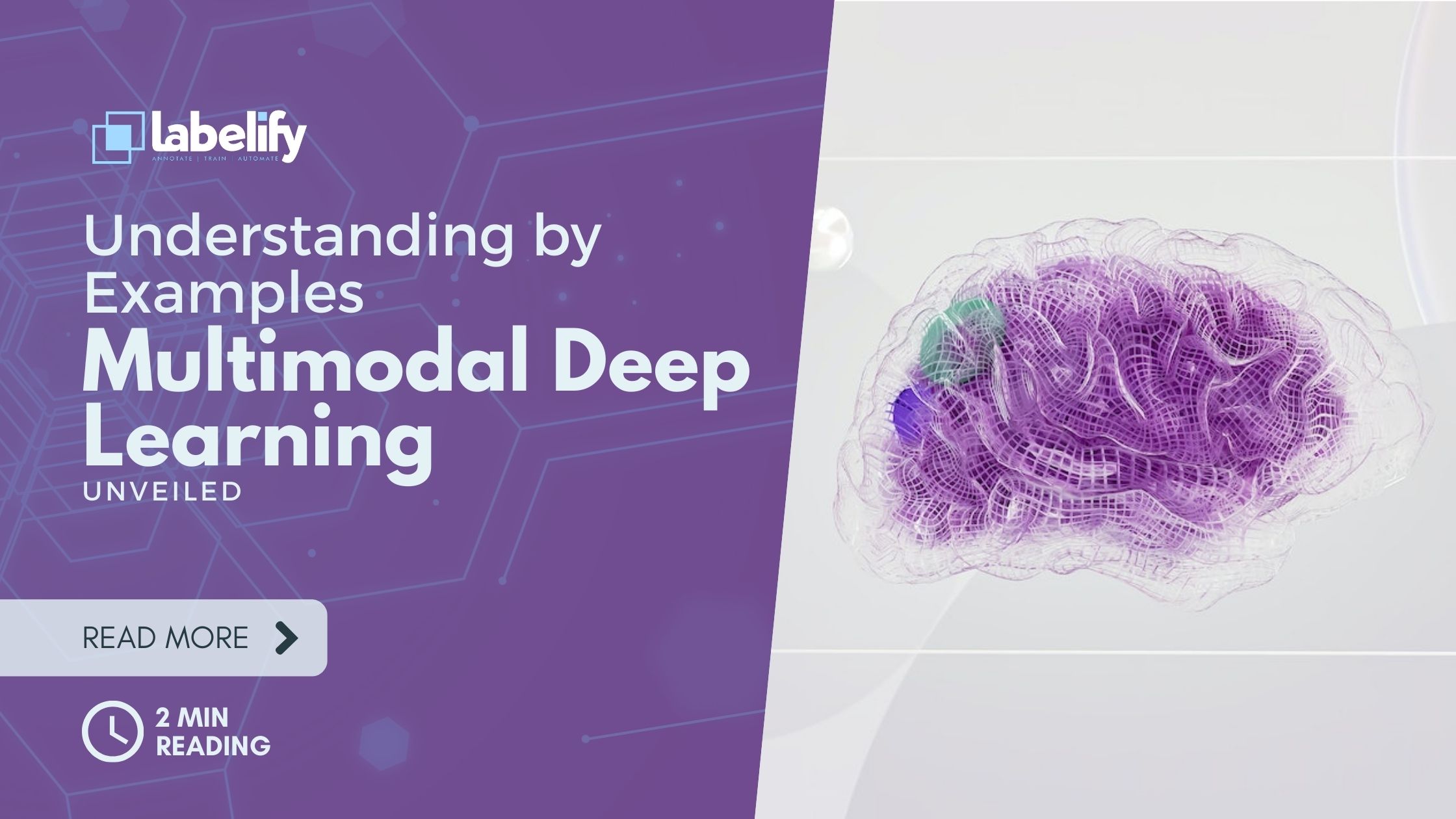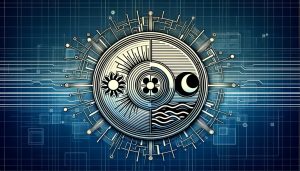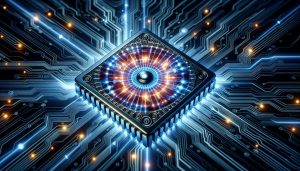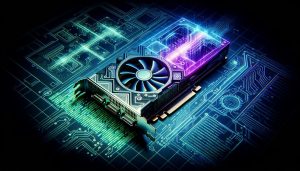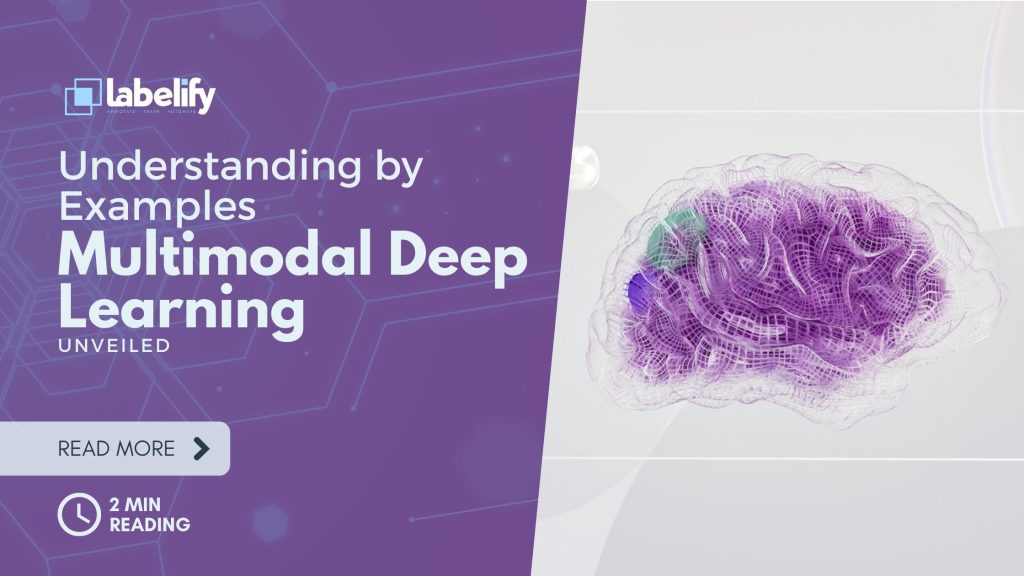
In the field of computer science, Multimodal Deep Learning has emerged as an innovative approach to training artificial intelligence models.
By incorporating multiple types of data, such as images, videos, audio, and text, these models can better understand their environment.
This approach addresses key challenges and offers significant promise in applications such as emotion recognition, autonomous driving, healthcare, and social media analysis.
With continued advancements, Multimodal Deep Learning holds the potential to revolutionize the capabilities of AI models and their understanding of the real world.
Table of Contents
Key Takeaways
- Multimodal deep learning trains AI models to process and find relationships between different types of data such as images, video, audio, and text.
- Multimodal models are needed to comprehend the environment more universally, as unimodal models have limited capabilities.
- Multimodal deep learning aims to solve challenges such as representation, fusion, alignment, grounding, and evaluation.
- Multimodal deep learning has various applications in fields like emotion recognition, autonomous driving, healthcare, human-computer interaction, and social media analysis.
What Is Multimodal Deep Learning
Multimodal deep learning is a field of study that focuses on training artificial intelligence models to process and analyze different types of data from multiple sources, such as images, video, audio, and text. It aims to enhance the capabilities of AI models by incorporating multiple modalities, allowing for a more comprehensive understanding of the environment.
In the context of natural language processing, multimodal deep learning involves combining textual data with other modalities like images or audio to improve language understanding and generation.
Similarly, in the domain of autonomous robotics, multimodal deep learning enables robots to process diverse sensory inputs, such as visual and auditory data, to enhance perception and decision-making.
Core Challenges in Multimodal Learning
One of the core challenges in multimodal learning is the effective representation of data from multiple modalities. To address this challenge, researchers have developed various techniques and approaches. Here are four key aspects to consider:
- Multimodal fusion techniques: Fusion is the process of combining information from different modalities. It involves determining the best way to integrate and aggregate data to enhance the model’s performance. Techniques such as early fusion, late fusion, and cross-modal attention mechanisms have been proposed to effectively combine information from multiple modalities.
- Evaluation metrics in multimodal learning: Evaluating the performance of multimodal learning models is essential to ensure their effectiveness. However, designing appropriate evaluation metrics for multimodal tasks can be challenging. Metrics such as accuracy, precision, recall, and F1-score are commonly used, but novel metrics that capture the inherent characteristics of multimodal data are needed.
- Alignment of modalities: Aligning different modalities is crucial for multimodal learning. It involves establishing correspondences or mappings between modalities to enable meaningful interactions and relationships. Techniques like cross-modal retrieval and cross-modal alignment aim to align different modalities based on shared semantic information.
- Grounding multimodal information: Grounding is the process of connecting multimodal information to the real world, enabling models to understand the context. It involves linking modalities to their corresponding real-world entities or concepts. Techniques like object detection, named entity recognition, and semantic role labeling can be used to ground multimodal information effectively.
Addressing these challenges in multimodal learning is essential for developing robust and efficient models that can effectively leverage information from multiple modalities. By overcoming these obstacles, researchers can unlock the full potential of multimodal deep learning and enable more sophisticated AI systems.
Applications of Multimodal Deep Learning
The application of multimodal deep learning spans across various industries and domains.
In the field of robotics, multimodal deep learning enables machines to process and understand information from different modalities such as images, video, audio, and sensor data. This allows robots to perceive their environment more effectively and make intelligent decisions.
Additionally, multimodal deep learning is also revolutionizing natural language processing (NLP). By combining textual, visual, and auditory data, multimodal NLP models can achieve a more comprehensive understanding of language, improving tasks such as sentiment analysis, machine translation, and question answering.
The integration of multimodal deep learning in robotics and NLP holds great potential for transforming industries and enhancing human-computer interactions in a wide range of applications.
Benefits of Multimodal Deep Learning
Building upon the previous subtopic, the integration of multimodal deep learning in robotics and NLP brings forth a plethora of advantages in various industries and domains. Advancements in multimodal deep learning have revolutionized the field, enabling AI models to process and understand different types of data such as images, video, audio, and text.
The benefits of multimodal deep learning can be summarized as follows:
- Enhanced comprehension: By combining different modalities, multimodal models can capture information that may not be visible in a single modality, leading to a more holistic view and deeper understanding of the environment.
- Improved performance: Multimodal models have shown improved performance in various tasks compared to unimodal models, thanks to their ability to leverage the synergies between different modalities.
- Wide-ranging applications: The applications of multimodal deep learning span across industries, including healthcare, autonomous driving, social media analysis, and more. This versatility makes it a valuable tool for solving complex challenges.
- Future advancements: Continued research and practice in multimodal deep learning can lead to even more powerful AI models with a better understanding of the world, paving the way for new breakthroughs in natural language processing and other domains.
Techniques in Multimodal Learning
Advancements in multimodal deep learning have led to the development of various techniques that enhance the processing and understanding of different types of data.
Two key techniques in multimodal learning are multimodal feature extraction and fusion techniques.
Multimodal feature extraction involves extracting meaningful representations from each modality, such as visual, textual, and auditory data. This process captures the semantic information and exploits synergies between different modalities.
Fusion techniques, on the other hand, focus on combining the individual modalities after feature extraction. This fusion module integrates the information from different modalities into a single representation, which is then fed into a classification model for further processing.
These techniques enable models to leverage the strengths of each modality and improve performance in tasks such as image retrieval, text-to-image generation, visual question answering, and emotion recognition.
The continuous advancement of these techniques in multimodal deep learning holds the potential for even more powerful AI models and a deeper understanding of the world.
Translating Modalities
With the advancement of multimodal deep learning techniques, the process of translating modalities allows for the mapping of information learned from one modality to tasks involving another. This process opens up new possibilities for multimodal learning, particularly in the field of natural language processing.
Here are four key advancements and challenges in translating modalities:
- Cross-modal representation learning: Developing techniques to encode information from different modalities into a shared representation that captures the underlying semantic information.
- Modality alignment: Identifying correspondences or mappings between modalities to ensure that information from one modality can be effectively transferred to another.
- Transfer learning: Leveraging knowledge learned from one modality to improve performance on tasks involving another modality, thereby reducing the need for large amounts of labeled data.
- Evaluation metrics: Developing robust evaluation metrics to assess the effectiveness and performance of translated modalities, ensuring that the transferred information is accurately utilized in the target task.
Multimodal Co-learning
Developing techniques for leveraging information learned from multiple modalities is a key aspect of multimodal co-learning in deep learning research. Multimodal co-learning refers to the process of training models to jointly learn from and make predictions based on multiple modalities. This approach offers several advantages in comparison to unimodal learning.
Advantages of Multimodal Co-learning:
- Enhanced Performance: Combining information from different modalities allows models to capture complementary and redundant cues, leading to improved performance in various tasks.
- Robustness: By incorporating multiple modalities, models become more robust to noise and variations in individual modalities, increasing their reliability.
- Holistic Understanding: Multimodal co-learning enables a more comprehensive understanding of the environment by integrating different types of sensory inputs, leading to a deeper comprehension of complex phenomena.
Despite its advantages, multimodal co-learning also has its limitations:
- Data Availability: Collecting and annotating multimodal datasets can be challenging and time-consuming, limiting the availability of training data.
- Computational Complexity: Processing multiple modalities requires more computational resources and can be computationally expensive, especially when dealing with large-scale datasets.
- Alignment Challenges: Aligning and synchronizing data from different modalities can be difficult, as they may have different characteristics and sampling rates.
Table: Advantages and Limitations of Multimodal Co-learning
| Advantages | Limitations |
|---|---|
| Enhanced Performance | Data Availability |
| Robustness | Computational Complexity |
| Holistic Understanding | Alignment Challenges |
Multimodal Neural Networks
One approach to address the challenges of multimodal co-learning is through the use of multimodal neural networks. These networks are designed to process and integrate information from different modalities, such as images, audio, text, and sensor data. By combining multiple unimodal networks, multimodal neural networks enable a more comprehensive understanding of the environment and improve performance in various tasks.
Here are four key aspects of multimodal neural networks:
- Representation: Multimodal neural networks encode data from different modalities in a way that captures semantic information and exploits synergies between them.
- Fusion: These networks join information from multiple modalities to perform prediction tasks, dealing with heterogeneous data.
- Alignment: Multimodal neural networks identify direct correspondences or mappings between the different modalities.
- Grounding: These networks connect multimodal information to the real world, enabling models to understand the context.
Applications of multimodal neural networks span across industries, including emotion recognition, autonomous driving, healthcare, human-computer interaction, and social media analysis.
However, challenges in multimodal neural networks include finding effective representation methods, handling heterogeneous data fusion, achieving accurate alignment, and ensuring proper grounding of the multimodal information.
As research and advancements in this field continue, multimodal neural networks have the potential to revolutionize AI models and their understanding of the world.
Datasets for Multimodal Deep Learning
To facilitate research and development in multimodal deep learning, the availability of diverse and comprehensive datasets is crucial. These datasets are essential for training and evaluating multimodal models and allow researchers to explore the capabilities and limitations of their algorithms. However, collecting and labeling multimodal datasets pose several challenges. First, it can be difficult to obtain data from multiple modalities, as different sensors and data sources may be required. Second, labeling multimodal datasets can be a time-consuming and subjective task, as it often requires human annotators to interpret and label data from different modalities. Despite these challenges, researchers have made significant progress in collecting and curating multimodal datasets. They have also developed data augmentation techniques for multimodal deep learning, which involve artificially creating new training examples by applying various transformations to the existing data. These techniques help increase the size and diversity of the dataset, improving the generalization and robustness of multimodal models.
| Dataset | Modalities | Size | Description |
|---|---|---|---|
| COCO-Captions | Images, Text | 120k images, 600k captions | Captions describing objects and scenes in images |
| VQA | Images, Text | 204k images, 1.1M questions | Questions about images, requiring both visual and textual understanding |
| CMU-MOSEI | Audio, Video, Text | 23k utterances, 5.3 hours | Multimodal dataset for emotion recognition and sentiment analysis |
| Social-IQ | Images, Text, Social media data | 6k images, 60k posts | Multimodal dataset for social media analysis and user sentiment detection |
These datasets, among others, serve as valuable resources for researchers and practitioners in the field of multimodal deep learning. They enable the development and evaluation of state-of-the-art models and algorithms, fostering innovation and advancements in the field.
Frequently Asked Questions
How Does Multimodal Deep Learning Improve the Accuracy of Emotion Recognition Compared to Unimodal Models?
Improving emotion recognition through multimodal deep learning involves comparing modalities to capture a more comprehensive understanding of emotional cues.
By combining visual, audio, and textual information, multimodal models can detect subtle nuances and context that may be missed by unimodal models.
The integration of multiple modalities allows for a more accurate interpretation of emotions, leading to improved recognition performance.
This approach revolutionizes emotion recognition by leveraging the synergies between different modalities and providing a holistic view of emotional expression.
What Are Some Specific Techniques Used in Multimodal Deep Learning to Combine and Process Different Modalities?
Multimodal fusion techniques and modality-specific feature extraction are some specific techniques used in multimodal deep learning to combine and process different modalities.
Multimodal fusion techniques involve integrating information from multiple modalities, such as visual, auditory, and textual data, to make predictions. This can be achieved through approaches like late fusion, early fusion, or hybrid fusion.
Modality-specific feature extraction focuses on extracting meaningful representations from each modality before combining them.
These techniques play a crucial role in enhancing the performance and accuracy of multimodal deep learning models.
How Can Multimodal Deep Learning Be Applied in the Field of Healthcare?
Multimodal deep learning has significant potential in the field of healthcare.
By integrating medical images and patient records, multimodal models can assist in disease diagnosis and treatment.
These models can analyze medical images, textual reports, and sensor data to provide more accurate and comprehensive insights.
The combination of visual and textual information allows for a holistic view of patient health, enabling healthcare professionals to make more informed decisions.
Multimodal deep learning in healthcare has the potential to revolutionize medical diagnosis and improve patient outcomes.
What Are Some Real-World Applications of Multimodal Deep Learning in Autonomous Driving?
Real-world applications of multimodal deep learning in autonomous driving include real-time object detection and natural language processing.
Multimodal models can process visual, LiDAR, and depth data to accurately detect and perceive objects in the environment. By combining different modalities, these models can capture information that may not be visible in a single modality, improving the overall performance and safety of autonomous vehicles.
Additionally, multimodal deep learning can enable natural language processing, allowing vehicles to understand and respond to voice commands and communicate with passengers in a more intuitive manner.
Can Multimodal Deep Learning Models Analyze and Understand User Sentiment in Social Media Posts?
Multimodal deep learning models have the potential to analyze and understand user sentiment in social media posts. By combining visual, textual, and auditory cues, these models can capture the nuances of sentiment expressed in different modalities.
However, there are challenges in multimodal sentiment analysis, such as representing and fusing the information from multiple modalities, aligning the modalities, and grounding the analysis in real-world context.
Overcoming these challenges will enable more accurate and comprehensive sentiment analysis in social media, leading to valuable insights for businesses and individuals alike.
Conclusion
In conclusion, multimodal deep learning has emerged as a promising field in computer science, allowing artificial intelligence models to analyze and process various types of data.
By addressing key challenges and leveraging deep neural networks, these models can capture relationships between different modalities, leading to a more comprehensive understanding of the environment.
With applications ranging from emotion recognition to healthcare and autonomous driving, multimodal deep learning offers a holistic view of the world, revolutionizing the capabilities of AI models.
Continued advancements in this field hold the potential for further enhancing the performance of AI models and their understanding of the real world.

